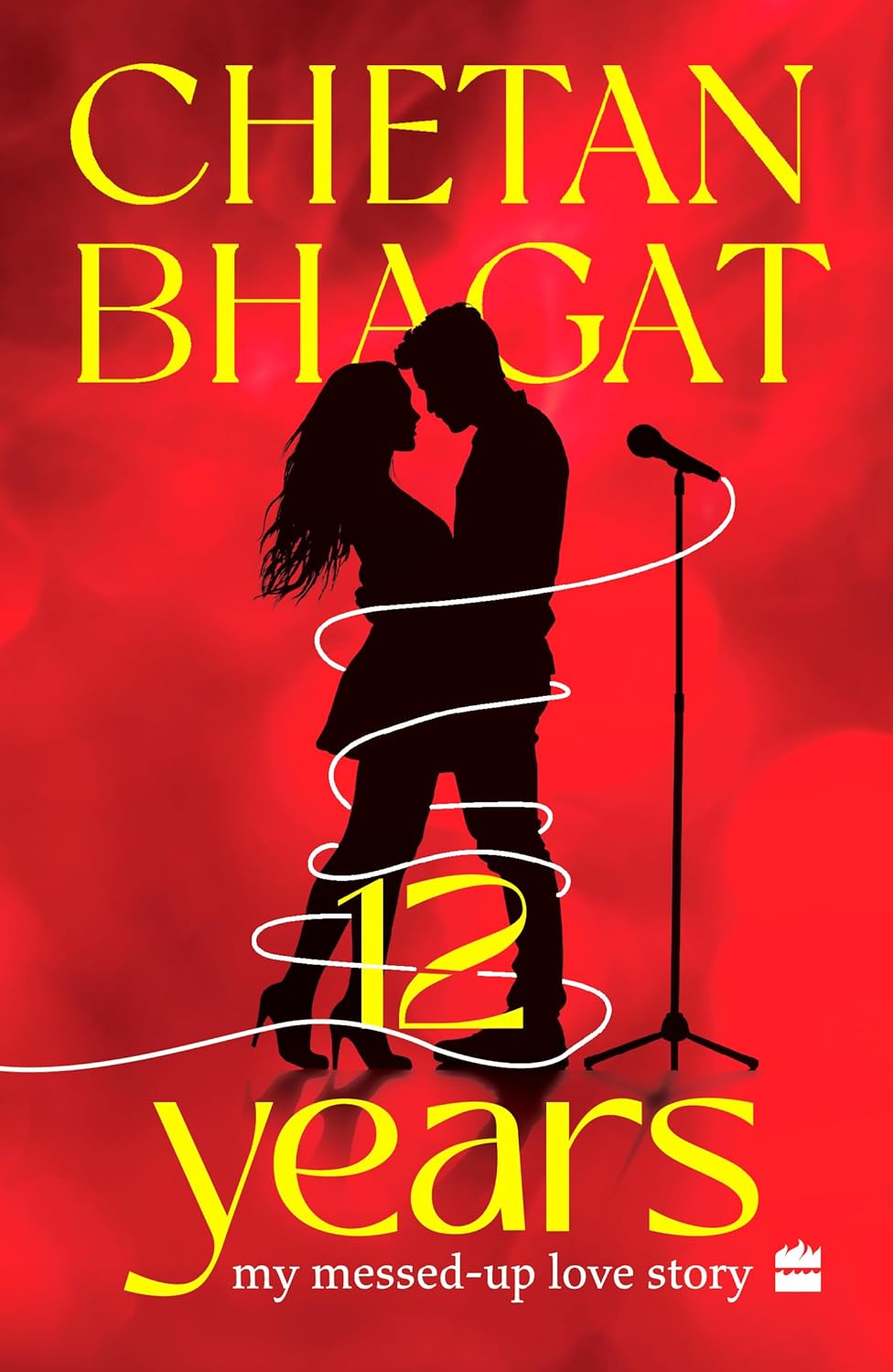7th Book of 2025!
Anyone who began their reading journey with Indian authors more than a decade and a half ago knows what Chetan Bhagat means to the Indian book ecosystem. If you haven’t read him, you probably don’t realize how his success paved the way for countless other authors to find a place in the Indian fiction section of bookstores. Having read all his previous books, I was quite excited about his new release, especially since it arrived after a four-year wait. I finished reading his latest novel — “12 Years: My Messed-up Love Story” — in just two sittings, despite it being his lengthiest book to date at 432 pages!
Chetan Bhagat returns to his signature style — easy narration, simple English, and a conversational tone — the very traits that brought him massive popularity back in 2005. The book flows effortlessly, allowing readers to get through it quickly and comfortably. It revolves around the love story of a 33-year-old man, Saket Khurana, and a 21-year-old woman, Payal Jain. Saket is recovering from the wounds of a divorce while trying to navigate a new career path, whereas Payal is stepping into the corporate world, finding her footing. The title 12 Years is aptly chosen, representing the age difference between the two protagonists.
At first glance, one might expect the story to focus primarily on the challenges the couple faces due to their age gap and differing ideologies. Surprisingly, though, they connect rather effortlessly. The initial dating conversations are engaging, and Bhagat effectively builds the personalities of both characters through those exchanges. The stand-up comedy scenes, a recurring element in the plot, are handled well — light, humorous, and easy to visualize. Alongside the main characters, Bhagat gives fair attention to the supporting ones too — whether it’s Saket’s friend, Payal’s parents, or her influencer best friend.
There are a few romantic and intimate scenes, written with the familiar flair that Bhagat is known for — something that has earned him both praise and trolling over the years. He executes them tastefully, making readers feel the same passion as the characters. The funniest moment in the book is when someone catches them in the middle of an intimate act — a scene that genuinely made me laugh out loud. I even made my friends read that part, and they all had the same reaction! Bhagat also injects humour through a Punjabi character’s perspective on the restrictive lifestyle of the Jain community but does so respectfully, ensuring it never comes across as offensive.
The story later shifts from Mumbai to Dubai, which adds freshness to the narrative. It’s rare to see Indian love stories travel beyond domestic settings, and the Dubai chapters add a nice visual variety. However, I wished Bhagat had explored the setting a bit more; it felt somewhat underutilized.
One major difference this time is Bhagat’s attempt to integrate real social issues into the storyline. He raises strong points about India’s gender-biased divorce laws that often work against men, the trend of unreasonable alimony demands, the social taboos surrounding caste, age gaps, and the “divorcee” label in matchmaking, the evolving dating culture, and the need for youngsters to balance career and relationships. He also highlights how marriages can fail without anyone being a “villain,” how Indian parents still try to impose their choices on children, the struggles of start-up funding, and how social media often masks the reality of people’s lives.
Despite being one of my go-to authors, I must admit that this book didn’t completely satisfy me. Bhagat’s return to love stories feels somewhat dated, offering nothing particularly fresh or groundbreaking, given his experience in the genre. His writing still caters largely to college-going readers rather than evolving to appeal to a wider, more mature audience. The narrative slows down noticeably in the second half, which affects the overall momentum. The plot also follows Bhagat’s familiar formula — two people fall in love, parental opposition arises, separation follows, and fate brings them together again. It feels a bit too Bollywood-esque, which can get repetitive.
I wish Bhagat had experimented more with the storyline, just as he did with the themes he courageously touched upon. The book could have benefited from tighter editing — it didn’t need to stretch to over 400 pages; somewhere around 250–300 would have sufficed. Moreover, the age-gap theme, while central to the title, doesn’t contribute much depth to the chemistry between the protagonists, making its prominence slightly puzzling.
Overall, “12 Years: My Messed-up Love Story” is a casual, breezy read that may appeal to new readers or young couples who enjoy light romantic fiction. For seasoned Bhagat readers or those seeking something deeper, it might not leave a lasting impact.
⭐ Rating: 3 out of 5
Thanks!
WRITING BUDDHA


.JPG)

0 comments:
Post a Comment